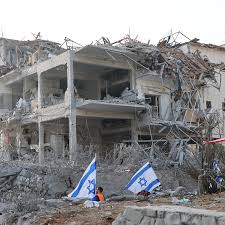
Israel strikes Iran’s southwest as nuclear tensions and regional threats escalate. images: Al Jazeera
Iran launched a missile barrage into Israel early Friday morning, prompting widespread panic and forcing millions of Israelis into bomb shelters. Despite the intensity of the attack, no casualties have been reported. In response, Israel continued its air campaign deep into Iranian territory, targeting military infrastructure and key nuclear-related facilities in Ahvaz, Shiraz, and Isfahan.
In Washington, President Donald Trump dismissed the European initiative and emphasised that any meaningful diplomatic resolution would require direct U.S. involvement. He announced a two-week window for potential negotiations before deciding whether to authorize a U.S. military strike on Iranian nuclear sites.
Foreign Minister Araghchi said Iran does not trust the United States and would not engage in negotiations as long as Israeli strikes continue. In Israel, military leadership signaled readiness for a drawn-out confrontation, with the chief of the defense forces warning of a “prolonged campaign” against Iran.
The human toll continues to mount. Iranian state media reported that over 400 people have been killed and more than 3,500 wounded since the Israeli offensive began on June 13. On the Israeli side, the death toll from Iran’s retaliatory strikes stands at 24.
The conflict is drawing in regional actors as well. Yemen’s Houthi rebels issued a warning today, threatening to target U.S. ships in the Red Sea if Washington joins the Israeli military campaign. In a strongly worded statement, the Houthis accused Israel of seeking to eliminate Iran as part of a broader plan to dominate the Middle East and vowed to support any Arab or Muslim nation under Israeli attack. They reiterated their solidarity with Palestinians in Gaza, saying they would not allow the “criminal entity backed by America” to advance its regional agenda unopposed.



